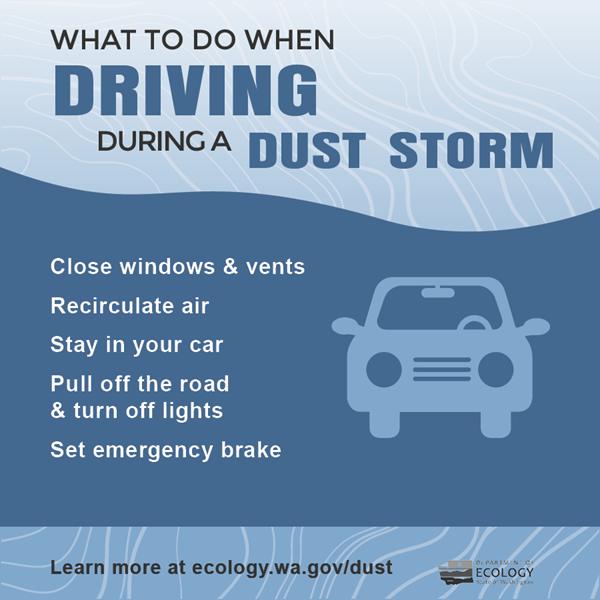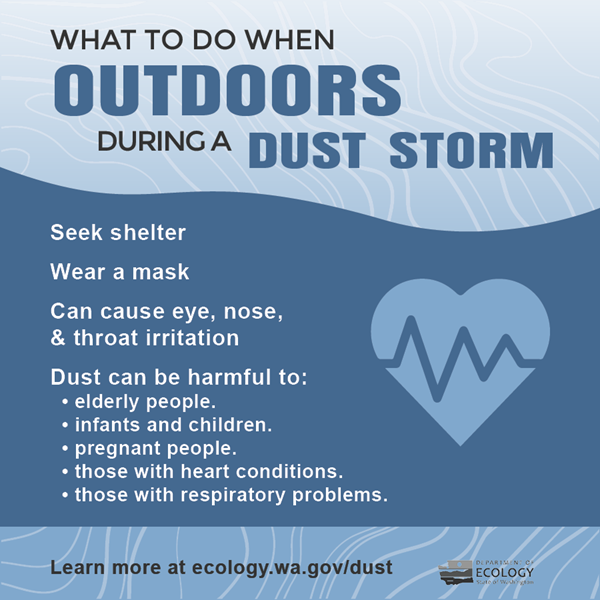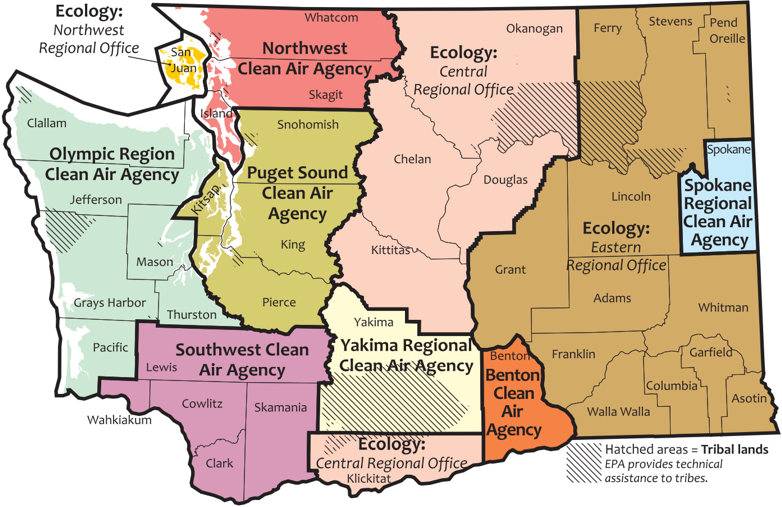
A massive dust storm approaches a barn in Harrington, Washington, on Aug. 12, 2014.
Every spring through fall, residents in Central and Eastern Washington are faced with the threat of dust storms. Dust storms typically happen when we're experiencing dry conditions. Strong winds pick up soil and blow it into vast clouds that can wreak havoc on the health and safety of anyone in their path.
What causes dust storms?
Spring thunderstorms bring wind events that pick up dust from agricutlural fields and blow it around, creating dust storms, also called haboobs. In recent years, the first dust storms in Washington have occured at the end of March or early April, when extensive ploughing of agricultural fields typically begins.
These storms sometimes reduce visibility to 100 feet or less, creating hazardous driving conditions. While dust storms can be unpredictible, you can help minimize their effects by driving slower on unpaved roads and by postponing projects that stir up even more dust. This will help keep soil on the ground and out of the air we breathe.
If you are caught in a dust storm, protect yourself by:
- Staying indoors as much as possible.
- Closing the windows, doors, and vents at home and in your vehicle.
- Covering your nose and mouth.
- Wearing an N95 mask that is designed to block dust particles.
- Watching for sudden changes in visibility while driving.
- Avoiding driving during windy conditions.
- Pulling off the road. Turn off your headlights and hazard lights if you are parked at the side of the roadway, as a safety precaution.
“In the past, motorists driving in dust storms have pulled off the roadway, leaving lights on. Vehicles approaching from the rear and using the advance car’s lights as a guide have inadvertently left the roadway and in some instances collided with the parked vehicle. Make sure all of your lights are off when you park off the roadway.” – National Weather Service
Agricultural & construction practices make a difference
Drought, agricultural practices, and construction projects leave the ground bare and can stir up dust, contribute to the formation of dust storms, and pollute groundwater.
The good news is that modern soil-conservation efforts are starting to have a positive effect. Dust storms have been occurring less frequently in Washington since the mid-1990s, partly because the agricultural industry is implementing better management practices to prevent soil erosion, including:
- No-till farming
- Direct seeding
- Planting cover crops
- Establishing windbreaks
- Using dust suppressants, such as water or gravel
How dust storms affect your health
Dust storms pick up fine particles, called particulate matter — or PM10 — that are smaller than a grain of sand. These particles are harmful to your health when inhaled. The particles can settle deep into your lungs, irritating or damaging sensitive tissues in your respiratory system.
Get alerts and check air quality
Local clean air agencies partner with our agency to monitor the air for dust and other types of air pollution. You can track air quality in your area on our Air quality monitoring website.Sign up for the National Weather Service's Wireless Emergency Alerts to receive highwind warnings. Weather.gov has links to more alert services.
For more information, contact the clean air agency in your area:
- Benton Clean Air Agency: 509-783-1304
- Ecology Central Regional Office: 509-575-2490
- Ecology Eastern Regional Office: 509-329-3400
- EPA Region 10 - Tribal lands: 1-877-424-4372
- Spokane Regional Clean Air Agency: 509-477-4727
- Yakima Regional Clean Air Agency: 509-834-2050




